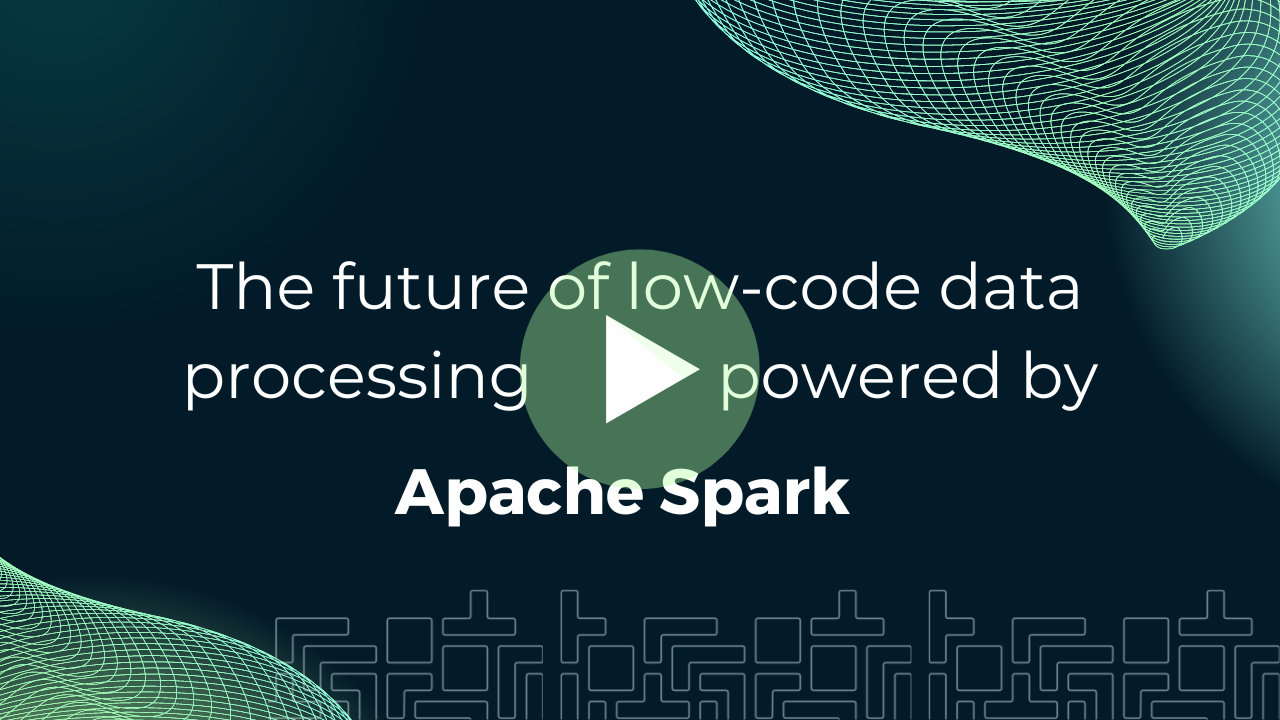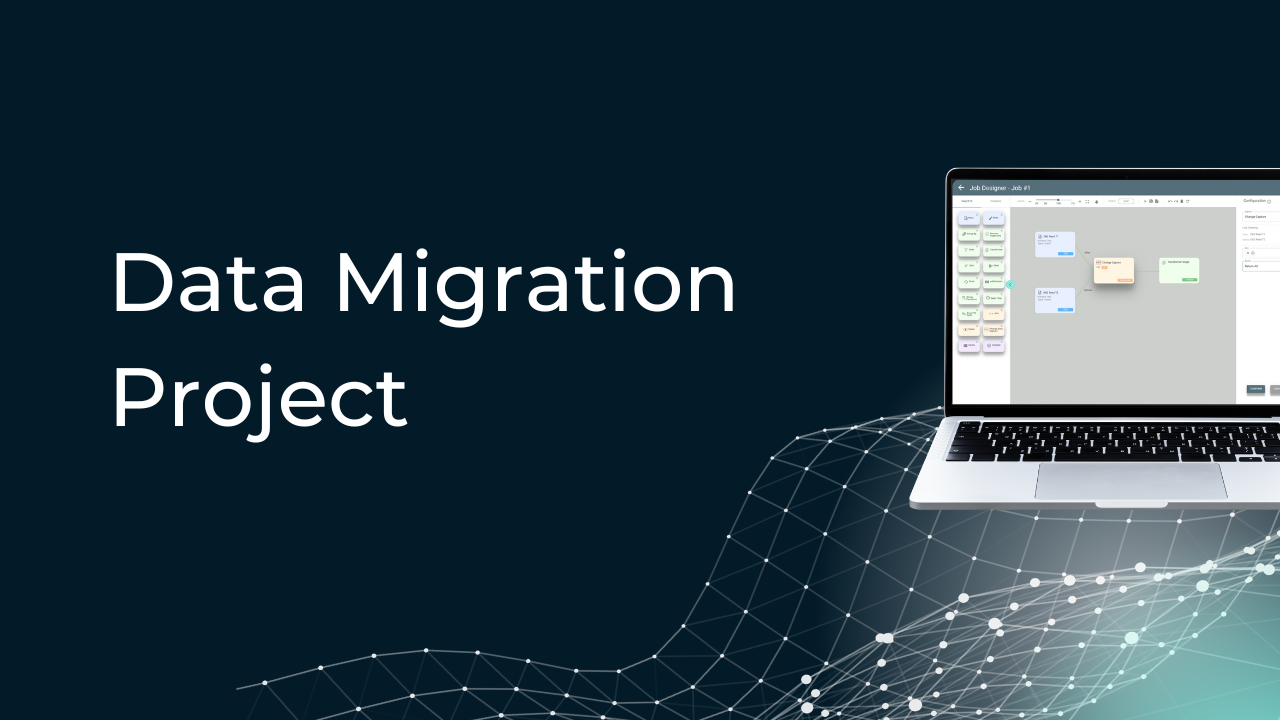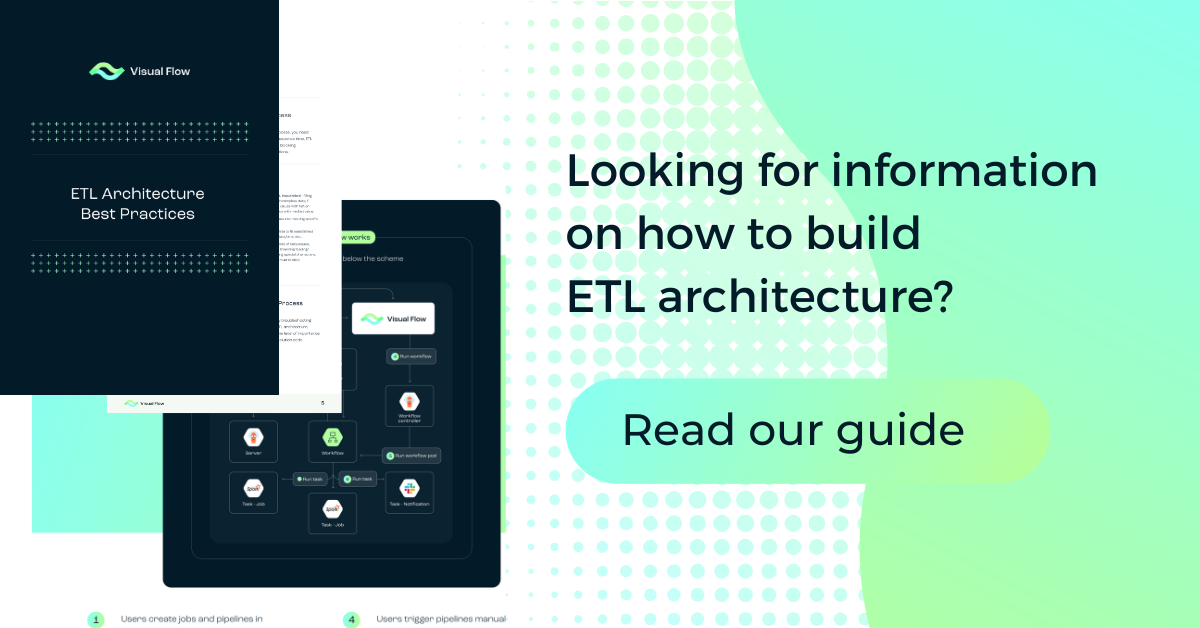Table of Content:
Table of Content:


Extract, transform, and load (ETL) software solutions are something that business-generated data is useless without. They allow for retrieving information from disparate sources, checking it for consistency and quality, cleansing it if necessary, and consolidating it into data warehouses.
The ETL tool market is a part of a larger niche — the big data and business analytics sector. It raised roughly $60 billion over the past year and amounts to $274.3 billion as of 2022. It’s a clear indicator that the ETL solutions gradually become of extreme importance for business owners that promote goods online.
But who is leading the bandwagon of the latest ETL tools? Let’s take a closer look at today’s leading solutions and see what’s what based on a detailed ETL tool comparison chart to help you pick the best tool on the market.
ETL Tools Comparison Criteria
Data integration ETL tool comparison is hardly possible without having a brief overview of the major criteria first. Here’s a list of the criteria that we use further in the post:
- Environment variables platform. Environment variables are simple dynamic-named values that may impact and shape the way an ETL tool behaves inside a running system. An ETL software solution should have a reliable environment variables platform integrated for that purpose. The more extensive the integration’s functionality, the higher it is rated in the chart.
- Scaling clusters. An efficient ETL solution enables the support of a virtually unlimited number of concurrent queries. You should be able to scale clusters by changing the number of available nodes. Similarly to environment variables, the nodes with various functionality can be integrated.
- Source-to-Target mapping. The process of mapping the data between sources and target databases is essential. The number of supported data categories is a defining factor for ETL tools.
- Operators. These are basic design elements for mapping. They represent sources and target environments in the whole system’s data flow. The extent of supported operators is a defining factor.
- Alerting. A notification system that sends a descriptive message every time a process is either completed successfully or failed must be in place. The alerting system is a standard out-of-the-box requirement.
- Data pipelines. These are sets of processes for extracting, transforming, and loading data. This feature should normally be present, as it is integral for an ETL tool’s desired overall performance.
- Custom code. Custom opportunities are not fit-for-all. However, for certain projects, specialists find it absolutely necessary to build custom infrastructures and separate work in progress from the production system. Custom coding should be a by-default functionality.
- Cloud services support. A relevant top ETL tools comparison cannot go without reviewing support of cloud services. The extent of integration with cloud databases is yet another out-of-the-box requirement for a leading ETL solution.
- User interface. We include desktop and web versions of digital solutions in our ETL tool comparison. However, modern users prefer to not have anything installed on their PC without the strictest need, so in terms of UI, the availability of a web edition equipped with the intuitive user interface takes the ETL comparison ranks.
- Delivery cost. We are not diving into an ETL tool cost comparison in-depth, but some commercial ETL tools may charge a full-price license while others are subscription-based. An option with an open-source license is preferable for obvious reasons.
- Process monitoring. This functionality allows checking performance status, allocation of resources, process launch scheduling, etc. A user normally receives all monitoring information in the form of reports. A process monitoring feature heavily impacts the overall convenience of using an ETL tool.
In the below ETL tool comparison table, the summary of the absence or presence of these criteria and their usability is what defines a leading tool.
ETL Tools to Be Compared
A comprehensive ETL vendor comparison is a great way to acquire a general insight into ETL solutions available on today’s market. Here are the exact solutions we compare in the table below:
- Gathr. This is an end-to-end data platform for ingestion, integration, streaming analytics, and machine learning in data-related processes. It has a thoroughly visualized, user-friendly drag-and-drop user interface that offers more than 300 pre-built operators and automated data pipelines.
- Upsolver. One of the most commonly used commercial ETL tools, Upsolver is technically an SQL pipeline platform. Particularly, it is focused on batch, micro-batch, and real-time historical and live data processing. It is also positioned as a solution for complex data engineering problems.
- Hydrograph. In our ETL tools comparison matrix, Hydrograph is notably positioned as a GUI-based RTL tool intended specifically for processing big data. It handles big data workloads on infrastructure or on the cloud without MapReduce or Spark coding involved. An enterprise version offers more capabilities for medium to large-scale businesses. It features subjobs and parameterization, as well as process execution tracking visuals.
- AWS Glue. Another fully-fledged service for retrieving, validating, and categorizing data. AWS Glue helps enrich data and move assets between data repositories. A specialized ETL engine Data Catalog automatically generates Python and Scala code and serves as a flexible scheduler handling dependency resolutions. AWS Glue is specifically designed to work with semi-structured data.
- Azure Data Factory. This tool is positioned as the cloud orchestration engine. It takes data from physical data storage, orchestrates, and uploads it into a cloud-powered data repository. This enables the creation of data-driven workflows. The main feature of the tool is enterprise-level scalability.
- IBM DataStage. This is a data integration solution focused on the design, development, and tasking related to moving and transforming data. IBM DataStage enables the building of a data pipeline on a cloud-native insight platform. It has an auto workload balancing feature that helps process substantial data volumes.
- Pentaho. A desktop application that helps outline data transformations and schedule tasks. Its common uses are data migration between databases, loading huge data sets, data cleansing, real-time data integration, and surrogate key creation.
- Visual Flow. This is a cloud-native, high-performance solution by IBA Group’s subsidiary company. It notably intends to outperform competitors in any matter. The kicker of the software is workflow streamlining opportunities. Visual Flow is the only tool in this list having an open-source license instead of offering a paid subscription or license.
- Informatica PowerCenter. This enterprise-level ETL tool helps build corporate databases. Some of the useful Informatica PowerCenter functionalities and features are B2B data exchange, data migration, service-oriented architectures, Integration Competency Centers, and data replication.
- Microsoft SSIS. The last but not least on our ETL vendor comparison list is a platform for building data integration solutions. It enables the creation of custom solutions to solve data migration tasks. The solution has a notably overwhelming number of integrated features for data extraction, processing, and loading that embed a complex business logic.
ETL vendors compared below offer some of the most popular and high-performance ETL solutions on the market as of 2022.
ETL Tools Comparison Chart
| Name | Environment variables platform | Scaling clusters | Source-to-Target mapping | Operators | Alerting | Data pipelines | Custom code | Cloud services | User interface | Delivery cost | Process monitoring |
| Gathr | On top of Hadoop. Inadequate. | YARN. Inadequate. | Many | Many | Yes | Yes | Yes | Yes | Desktop. Inadequate. | Paid license | Yes |
| Upsolver | AWS. Inadequate. | YARN. Inadequate. | Average | Low | No | No | No | No | Desktop. Inadequate. | Paid license | Yes |
| Hydrograph | On top of Hadoop. Inadequate. | Not clear. | Many | Low | No | No | No | Yes | Desktop. Inadequate. | Paid license | Yes |
| AWS Glue | AWS. Inadequate. | YARN. Inadequate. | Only AWS. Inadequate. | Average | Yes | Yes | Yes | Yes | Web. Optimal. | Paid subscription | Yes |
| Azure Data Factory | Azure. Inadequate. | Not clear. | Many | Low | Yes | Yes | Yes | Yes | Web. Optimal. | Paid subscription | Yes |
| IBM DataStage | IBM Cloud Pak for Data | YARN. Inadequate. | Average | Many | Yes | Yes | Yes | No | Web/Desktop. Optimal. | Paid license | No |
| Pentaho | On top of Hadoop. Inadequate. | Not clear. | Many | Many | Yes | Yes | Yes | No | Desktop. Inadequate. | Paid license | No |
| Informatica PowerCenter | On top of Hadoop. Inadequate. | YARN. Inadequate. | Many | Many | Yes | Yes | Yes | Yes | Desktop. Inadequate. | Paid license | Yes |
| Microsoft SSIS | On top of Hadoop. Inadequate. | YARN. Inadequate. | Average | Average | Yes | Yes | No | Yes | Desktop. Inadequate. | Paid license | Yes |
| Visual Flow | Kubernetes. Optimal. | Kubernetes. Optimal. | Average | Average | Yes | Yes | Yes | Soon | Web. Optimal. | Open-source license | Yes, for allocated resources |
Takeaways From Compared ETL Tools
The above ETL tools comparison table gives clarity and rationality to base your further business decisions on. We can see from the get-go that Upsolver and Hydrograph can hardly make a sufficient choice of ETL tools because of their inadequate functionality.
At the same time, in this comparison analysis, Visual Flow shows an optimal combination of functionalities included. Considering the forthcoming support of cloud services and open-source ETL license as a distribution method, it appears that Visual Flow is the most suitable choice.
Visual Flow is followed by Gathr and IBM DataStage ETL platforms. Informatica seems to be a slightly better solution for enterprises due to its narrow-focus functionality and good scalability overall. Though its scaling cluster platform is rather technologically obsolete. Enterprise-level users will probably enjoy using Visual Flow as well.
How Could Visual Flow Help?
IBA Group is one of the largest IT service providers known for the high quality of their digital solutions. Visual Flow is the product by IBA Group’s subsidiary company. The tool is intended to improve the well-established data processing workflow by implementing the best ETL practices.
Visual Flow — a cloud-native, open-source ETL that combines the strengths of such well-known tools as Kubernetes, Spark, and Argo Workflows. Our solution scores the highest among competitors as per most of the specified criteria. It’s explained by our choice of the optimal tech stack helping to achieve high performance of the ETL solution. But more than that, you may prefer using Visual Flow for its open-source license, which eliminates additional expenses.
According to our best ETL tools comparison, the solutions available are not deprived of major limitations that somewhat complicate their use. And in this regard, Visual Flow by IBA Group is a true game-changer.
Learn more about how Visual Flow can enhance data processing for your business.
FAQ
Visual Flow tool ensures the most optimal combination of advantages, followed by Gathr, Informativa DataCenter, and IBM DataStage.
Informatica PowerCenter has the most users among other ETL software tools on our list, with Visual Flow having the most fast-growing fan base.
It appears that Visual Flow scores the highest based on the detailed criteria, not to mention that it is the only open-source ETL solution on the list.
Contact us































































